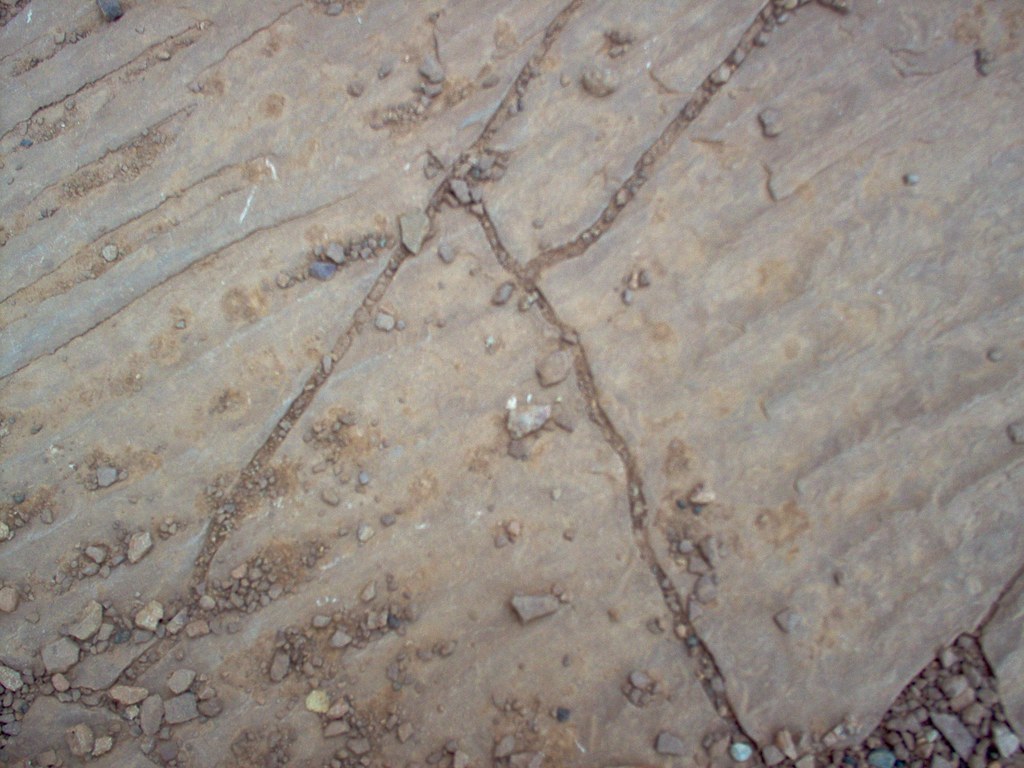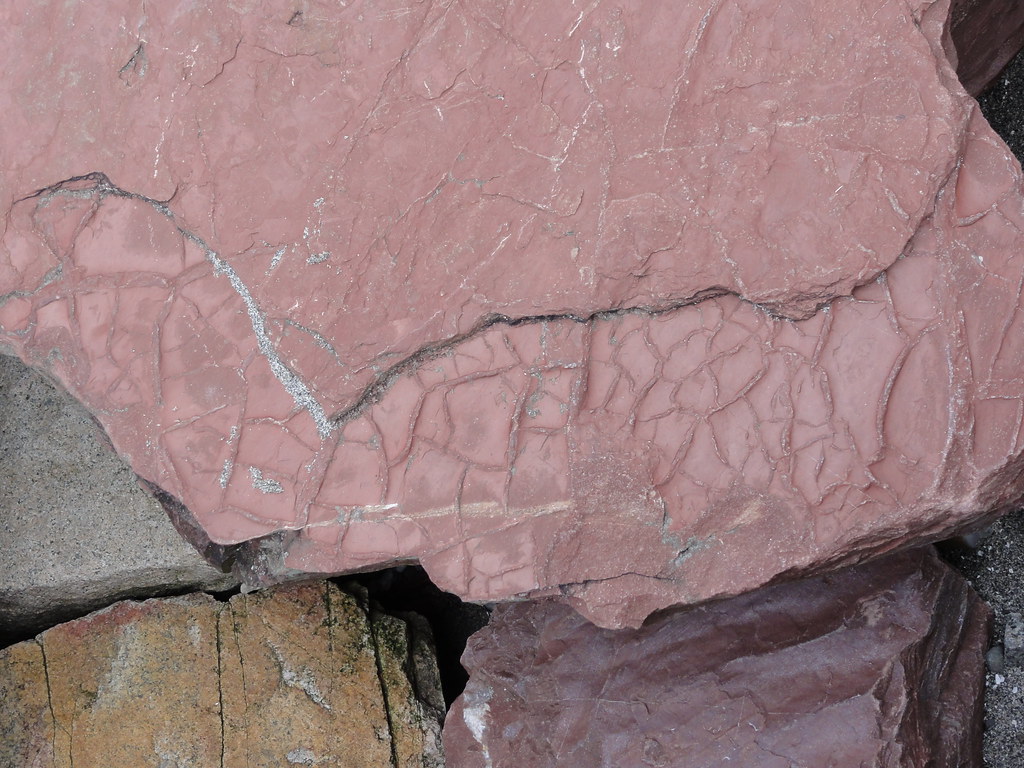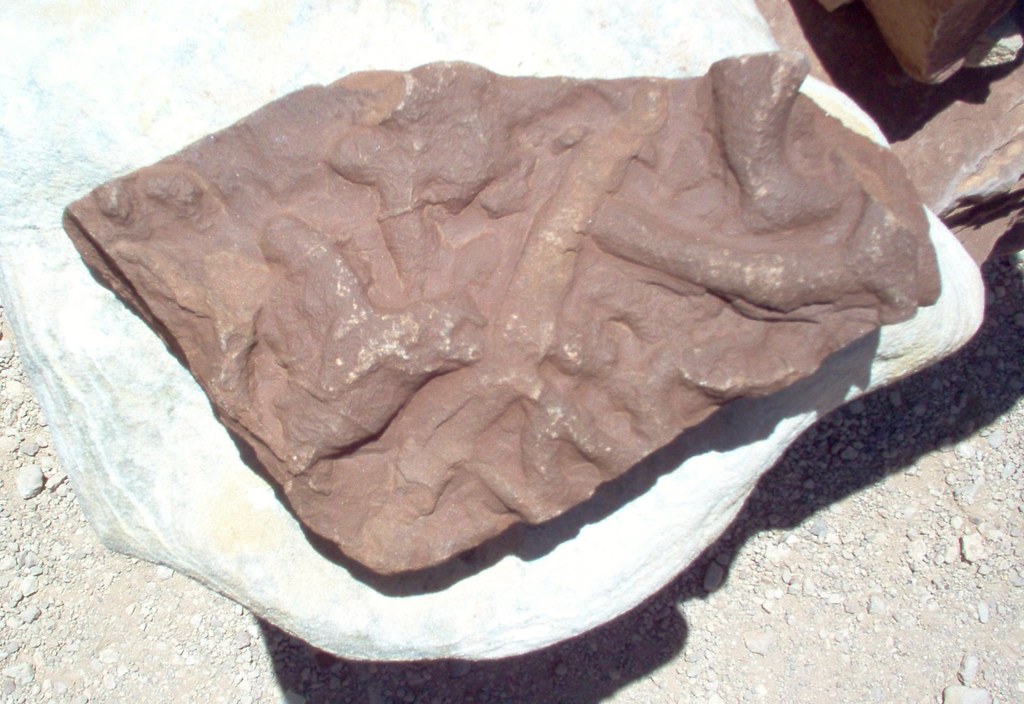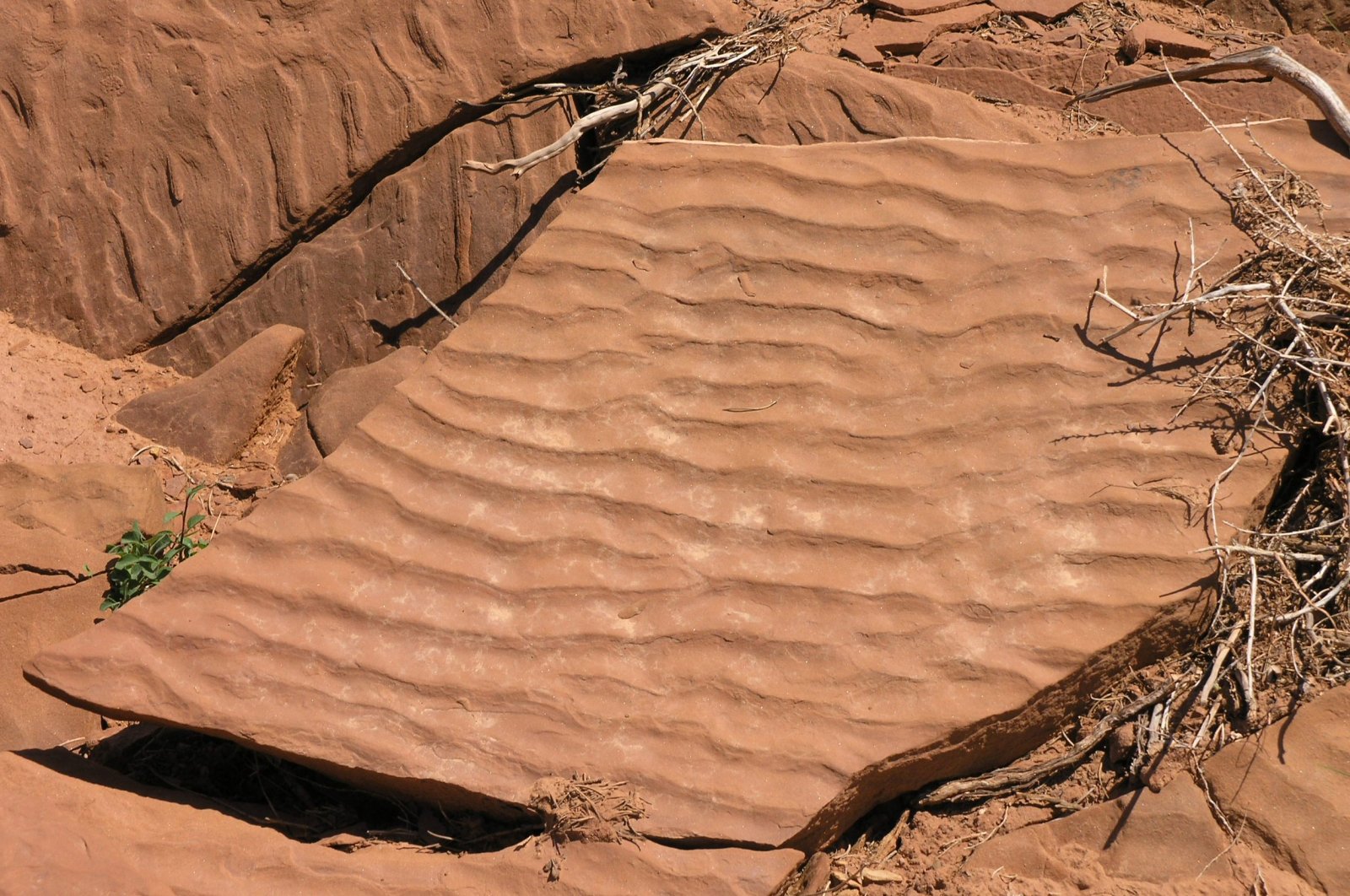It's Weird Geology month here for the Accretionary Wedge. Geology might not be quite as weird as quantum physics, but it's got its moments.
There's a great many weird things to choose from, but I'll tell you what warps my mind: seeing things we normally think of as temporary preserved forever in stone.
Two hundred and forty million years ago, waves left ripples in soft sands and silts. Currents worked and reworked these sediments, and you'd think that something so ephemeral would be wiped away long before the ancient mud flats and river beds turned to stone. But this time, other sediments swept in and buried the ripples whole. They lay there under their blanket for hundreds of millions of years, as ages passed, an orogeny lifted the plateau, time turned ancient muds to rock, and erosion wore the blanket away. Now here we are, in the middle of a desert, looking at the echo of wetter days.
I'm sorry, but that's just bloody
weird.
Walk around Wupatki, and you'll see ancient ripples exposed.
 |
| Ripples, Moenkopi Formation, Wupatki National Monument |
They tell geologists all sorts of things about where they formed: whether by wind or water, what direction the wind blew or the water flowed, what an environment long vanished was like. Just little ripples, most ordinary things in the world, suddenly extraordinary.
And it gets weirder.
 |
| Mudcracks, unidentified sedimentary rocks, Richmond Beach, WA |
Where I grew up, in northern Arizona, we got to see plenty of mud cracks. And the thing about them was, they never lasted. We'd have a torrential rain (in Arizona, when it rains, it usually
pours). Then it would get dry again (in Arizona, when it gets dry, it gets
dry). And then, a few days later, the hardened mud went back to being ordinary dirt again, worked over by wind, maybe a bit more water, and probably quite a variety of biological beings, all nice and soft and not a crack in sight. They didn't last.
So imagine my surprise when I learned that sometimes, if the mud cracks get covered by a nice layer of sand or silt, they can sometimes last forever.
 |
| Mud cracks, unidentified sedimentary rocks, Richmond Beach, WA |
And if the sediment that covers the mud cracks is a bit different from the sediment the mud cracks formed in, you get some really wild contrasts.
Mud cracks are a dead giveaway that the place these sedimentary rocks formed in suffered from wet and dry cycles. (I wish these told us more, but they're in boulders ripped out of their context, so I haven't got the slightest bloody clue what formation they're from. But if you ever make it down to Richmond Beach in Seattle, wander a bit down the beach toward the spot where the train tracks bend, and have yourself a look at the severely out-of-place mauve rocks shoring up the railway bed.)
And it gets weirder. And wormier.
 |
| Burrow casts, Moenkopi Formation, Meteor Crater |
These little delights are burrow casts. Some enterprising animals wormed their way down into the sediments way back when the Moenkopi Formation didn't realize what it was destined for. Then something, maybe a flood, washed a bunch of mud and sand down into the poor dears' homes, making a cast. These had a slightly more exciting life than some in the formation. Not only did they get elevated by thousands of feet over millions of years and turned to stone, but then, about fifty thousand years ago, a maclargehuge lump of iron and nickel fell out of space and tossed them around like a salad. Exciting times.
But that's not the mind-warping, worldview-changing, weirdest bloody thing I've ever seen. This is:
Okay, so I haven't seen that personally.
Chris Rowan has. I've seen structures like these in various formations around Arizona without realizing what I was looking at. Figured it was just a bit of weird weathering. Well, in a way, it is. But the weather happened millions of years ago, when rain fell on the smooth surface of a mud flat.
Raindrops. Fossil fucking
raindrops. Can you think of anything more unlikely to survive millions of years and who knows what vagaries of erosion than a raindrop? Such a delicate thing, such a tiny thing, a memory of a brief shower, so long ago, living to tell the tale.
Geology, my friends, is weird, and wonderful.













5 comments:
The post (and the raindrops) remembered me this:
http://www.youtube.com/watch?v=so_-OaDCddo
It's not weird, it's cool.
The weirdest fossil I remember from Arizona was this little gem, left behind long ago by a creature roughly the size of a cocker spaniel, I'd guess.
One of the most enjoyable paleontology lectures I heard was on trace fossils. Been watching for the ever since. The St George trackways museum has one of the best displays of trace fossils I've seen, tail drags!
Thanks for the reminder.
Judging from my company's training, ripples and bioturbation are neither weird nor at all rare. They're so common they're diagnostic criteria for the depositional environments they happen in - they only survive in low energy environments, so odds are it was during a lowstand or was associated with very low gradient, at least for the types of formations important for oil and gas.
Post a Comment